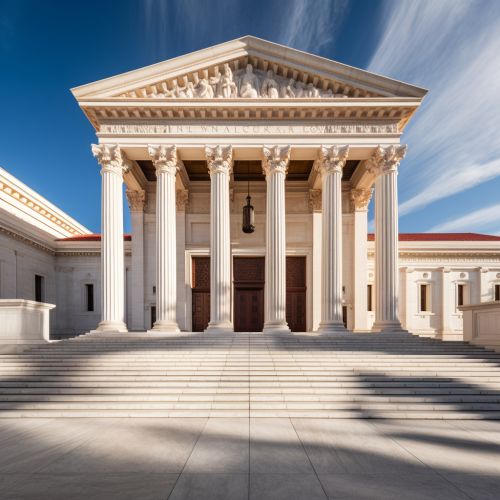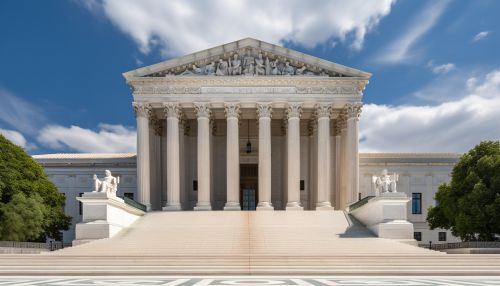History of the Supreme Court of the United States
Establishment and Early Years
The Supreme Court of the United States was established by the United States Constitution in 1789, as the highest federal court in the country. The Court's initial years were marked by uncertainty and instability, as it struggled to assert its authority and define its role within the new nation's government.


The Court's first session was held in February 1790, in the Merchants Exchange Building in New York City. The first Chief Justice, John Jay, and his associate justices were appointed by President George Washington. However, the Court initially had little to do, as it had no cases to hear in its first term and the federal judiciary was not fully established.
The Marshall Court (1801–1835)
The Supreme Court's stature and significance grew during the tenure of Chief Justice John Marshall, who served from 1801 to 1835. Marshall's leadership helped to establish the Court as an equal branch of government alongside the executive and legislative branches. His rulings in landmark cases such as Marbury v. Madison and McCulloch v. Maryland established the principles of judicial review and the supremacy of federal law over state law, respectively.
The Taney Court (1836–1864)
The Taney Court, led by Chief Justice Roger B. Taney, is perhaps best known for the Dred Scott v. Sandford decision, which ruled that African Americans, whether enslaved or free, could not be American citizens and therefore had no standing to sue in federal court. This decision was a major factor leading up to the American Civil War.
The Chase, Waite, and Fuller Courts (1864–1910)
During this period, the Supreme Court grappled with issues arising from the Civil War and Reconstruction, the rise of the industrial economy, and the growth of the federal government. Key decisions during this era addressed issues such as civil rights, federal power, and economic regulation.
The White and Taft Courts (1910–1930)
The White and Taft Courts were characterized by a conservative trend, with decisions often favoring business interests and limiting the power of the federal government to regulate the economy. This era also saw the Court's first ruling on the constitutionality of income tax.
The Hughes, Stone, and Vinson Courts (1930–1953)
During this period, the Court shifted from its previous conservative stance and upheld many of the New Deal programs implemented by President Franklin D. Roosevelt. This era also saw landmark decisions in the areas of civil rights and civil liberties, including West Virginia State Board of Education v. Barnette, which affirmed the right of students to refuse to salute the flag on First Amendment grounds.
The Warren Court (1953–1969)
Under the leadership of Chief Justice Earl Warren, the Court made a series of landmark rulings in the areas of civil rights, criminal procedure, and separation of church and state. Notable decisions from this era include Brown v. Board of Education, which declared racial segregation in public schools to be unconstitutional, and Miranda v. Arizona, which established the requirement for police to inform suspects of their rights before questioning.
The Burger, Rehnquist, and Roberts Courts (1969–present)
The Supreme Court has continued to play a pivotal role in American society and government during the tenures of Chief Justices Warren E. Burger, William Rehnquist, and John G. Roberts. Key decisions during this period have addressed issues such as abortion rights, affirmative action, gay rights, and the role of money in politics.
